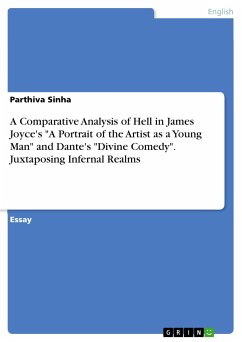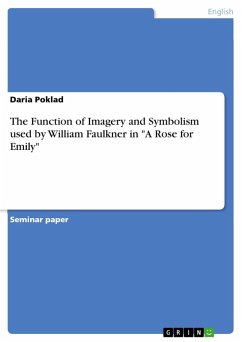Seminar paper from the year 2021 in the subject English Language and Literature Studies - Literature, grade: 3,0, Friedrich-Alexander University Erlangen-Nuremberg (Department of English and American Studies), language: English, abstract: In Shakespeare's early work Titus Andronicus, fourteen people meet their deaths on stage through various forms of murder and mutilation, desecration and involuntary cannibalism. Here, after a war with the Romans and Goths, two violent cultures collide. After the Gothic queen Tamora - although she was actually the spoils of war of the Romans - is taken as a wife by their new emperor, she and her lover take revenge for the ritual murder of one of her sons by the Romans. Now a spiral of violence is inexorably turning, to which she also falls victim. Since the beginning of human history and since myths and legends have existed, man, especially the male sex, has committed acts of violence. Violence here means physical and psychological coercion against people, and all actions that harm animals or things. Obviously, our instincts cause us to defend ourselves in certain situations. There are various reasons for this, e.g. to protect oneself, the family or the tribe from attackers, or to gain prestige and thus a higher social status. If we accept the fact that violence is something natural, we should also be open to stories and literary works that deal with this topic. So we should not condemn it, but try to understand it and learn to deal with this human tendency. The fact that outbreaks of violence have taken place - and are still taking place - in all kinds of forms and in all kinds of narratives or religions all over the world and at all times shows that human instincts and behaviors have been passed on. The reasons always seem to have the same basis, namely to protect the people and the weaker ones, to gain new land or property. In the world of Titus Andronicus, the motives for the numerous murders include revenge, anger, hatred, jealousy, pride, ambition and envy. Since the inclination to violence is particularly rooted in man's nature and is also triggered by social constructions, he has probably always had to struggle with an urge to do so throughout history and learn to control this urge. In the Elizabethan age, spectators of drama enjoyed public spectacles of torture and violence.
Dieser Download kann aus rechtlichen Gründen nur mit Rechnungsadresse in A, B, BG, CY, CZ, D, DK, EW, E, FIN, F, GR, HR, H, IRL, I, LT, L, LR, M, NL, PL, P, R, S, SLO, SK ausgeliefert werden.









